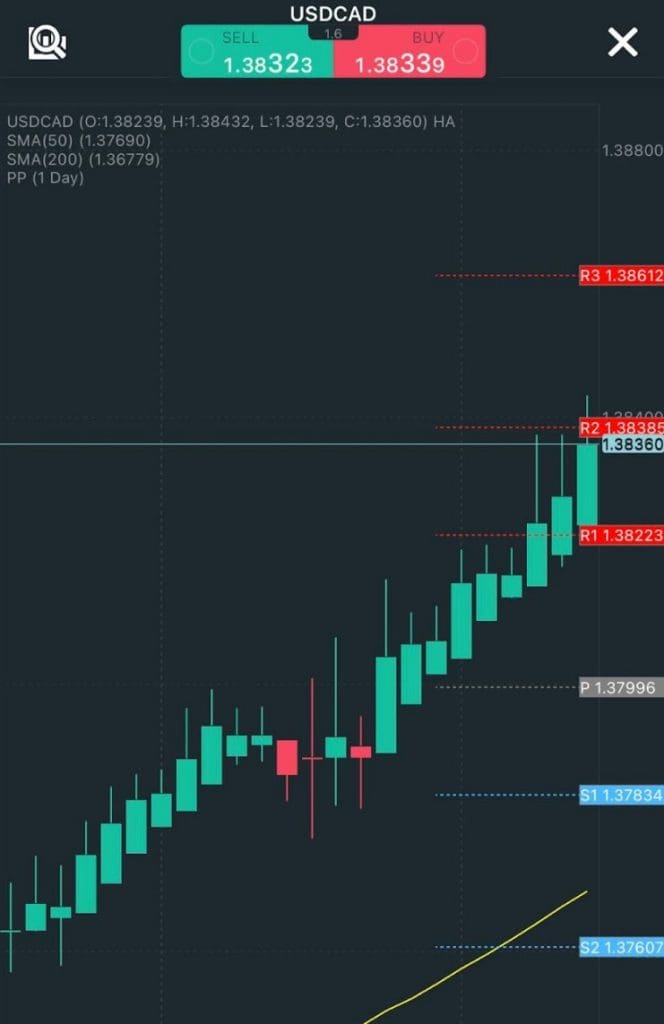Forex Trading in Sweden



Sweden’s forex market is not among the top globally, trailing larger markets like the US or UK, however it remains active due to its advanced financial infrastructure.
According to the Bank for International Settlements (BIS), Sweden’s krona (SEK) is the 11th most liquid currency, while average daily forex trading volumes in the country are estimated to be $42 billion.
Let’s find out how to trade forex in Sweden and explore an example trade.
Quick Introduction
- Popular currency pairs in Sweden include EUR/SEK and USD/SEK due to the Swedish krona’s relationship with the euro and dollar.
- Forex trading is overseen by the Swedish Financial Supervisory Authority – a ‘green tier’ regulator in line with DayTrading.com’s Regulation & Trust Rating.
- Profits from trading currencies in Sweden may be subject to capital gains tax at a 30% flat rate, with taxes owed to the Swedish Tax Agency.
Top 4 Forex Brokers in Sweden
Based on our latest findings, these 4 platforms are the best for forex traders in Sweden:
How Does Forex Trading Work?
Forex trading involves speculating on currency pairs, such as those containing the Swedish krona, with the aim to profit from market fluctuations.
To start trading forex you will need to:
- Open an account with a top forex broker. Firms should be registered with the Swedish Financial Supervisory Authority. Alternatively, they may accept Swedish traders through the EU’s passporting scheme, which allows regulated brokers to provide forex services across all EU and EEA member countries without needing separate authorization in each country.
- Deposit Swedish krona in your account. Some forex platforms support SEK accounts, making deposits and withdrawals convenient for Swedish investors.
- Execute currency trades using your broker’s desktop, web or mobile platform. Swedish traders may want to focus on currency pairs like EUR/SEK, USD/SEK, and EUR/USD.
Is Forex Trading Legal In Sweden?
Forex trading in Sweden operates within a regulated framework similar to other EU countries.
Trading currencies online is overseen by the Swedish Financial Supervisory Authority, known locally as Finansinspektionen.
They regulate financial markets, including forex brokers and trading activities, ensuring compliance with financial laws and protecting investors.
Rules are aligned with EU regulations under ESMA (European Securities and Markets Authority). These rules are designed to protect retail investors from excessive risk. Key points include:
- Leverage is capped on major currency pairs like EUR/USD to 1:30.
- Leverage is capped on non-major currency pairs like EUR/SEK to 1:20.
- Traders must maintain specific margin levels based on the leverage used.
- Forex brokers must provide negative balance protection so you cannot lose more than your deposited funds.
- Forex brokers must keep client funds segregated from company funds, preventing them from being misused.
Is Forex Trading Taxed In Sweden?
Sweden applies capital gains tax to profits from investments. The country’s capital gains tax is a 30% flat rate.
Therefore, profits from trading currencies and currency derivatives like forex CFDs, futures and options are taxed as capital gains.
When Is The Best Time To Trade Forex In Sweden?
The best time to trade forex in Sweden is when the market is active, ensuring higher liquidity and potentially more significant price movements.
Here are the critical trading times to consider:
- European Trading Session – Time: 9:00 AM to 5:00 PM CET (Central European Time). The European session has the highest trading volume and activity, particularly when London is open. This period is ideal for trading EUR/SEK, USD/SEK, and EUR/USD pairs.
- Overlap of European and US Sessions – Time: 2:00 PM to 5:00 PM CET. The overlap between the European and US sessions (the New York market opens at 2:00 PM CET) is particularly active. This time frame often features significant market movements and increased trading opportunities.
- Asian Session (less ideal) – Time: 12:00 AM to 9:00 AM CET. The Asian session is generally less active for Swedish traders, with lower liquidity and smaller price movements. However, it can help trade specific currency pairs involving the yen (JPY) or the Australian dollar (AUD).
Example Trade
Trading currency pairs with wide, uncompetitive spreads can be problematic for us day traders. Therefore, according to the most recent BIS survey, many active FX Swedish traders avoid their domestic pairs like EUR/SEK and trade pairs like EUR/USD, accounting for nearly 23% of forex trading.
However, competitive spreads are available on most major currency pairs in Sweden, including USD/CAD, which is the subject of my example trade.
I’ll concentrate on placing an FX trade using an economic calendar to help make an informed decision.
Background
The Bank of Canada (BOC) is Canada’s central bank. It met to decide and publish the latest interest rate decision.
Many central banks now adopt a policy of forward guidance regarding interest rate decisions, letting markets know of an upcoming decision so as not to ‘spook’ investors, traders, and exporters/importers.
I decided to take a long position in USD/CAD before the announcement based on the likelihood of an interest rate cut and the bullish momentum built up during the preceding day’s trading sessions.
As widely predicted, the BOC announced a reduction in its policy rate by 25 basis points to 4½%, causing CAD to fall versus many of its peers.
As can be seen in the attached chart, which shows USD/CAD displayed in a 2-hour timeframe using Heikin Ashi candles, the currency pair experienced a Doji pattern after the announcement was revealed at 14:45 GMT.
Typically, such a candlestick pattern indicates a pullback before continuing a prevailing trend or reversing a trend. It was doubtful that the Doji star predicted a reversal, as investors and traders weren’t expecting a hold or rise in the key rate.
Trade Execution
I was already long USD/CAD during the European session; my rationale in these situations is based on various experiences during my years of trading.
Trying to enter the market for a currency pair when a release is published can be problematic.
You can experience slippage and poor fills and be thrown out of a perfectly ‘good’ trade because your stop loss order is activated as the pair moves in a wide range shortly after the announcement.
To protect my capital against the trade going wrong, my stop was placed at the first level of support, S1. If I get the direction wrong, I use S1 and R1 for bullish and bearish trades; if I’m wrong on long, S1 will close my trade. If I’m wrong when short, R1 will close my trade. This is a mantra I’ve stuck to for years.
Where To Close The Trade?
“The secret of my success is I closed my trades too early”. That’s not my quote, but I get it.
I don’t entirely subscribe to the “let your winners run” mantra. So, I closed the trade once the trade hit R2 during the following European session.
Bottom Line
With a robust regulatory environment, a transparent tax system and access to sophisticated trading technology, Sweden is home to a budding forex market.
The SEK trails many prominent currencies in terms of trading volumes, but Swedish traders can explore short-term trading opportunities on dozens of currencies, including the US Dollar (USD), Euro (EUR) and Great British Pound (GBP).
To get started, explore our pick of the best forex brokers for day trading.
Recommended Reading
Article Sources
- Bank for International Settlements (BIS)
- Sweden’s krona – Investopedia
- Swedish Financial Supervisory Authority (Finansinspektionen)
- European Securities and Markets Authority (ESMA)
- MetaTrader 5 (MT5)
- The Bank of Canada (BOC)
- Forward guidance - Investopedia
- Economic calendar - Trading Economics
- Living Charts - Heikin Ashi
The writing and editorial team at DayTrading.com use credible sources to support their work. These include government agencies, white papers, research institutes, and engagement with industry professionals. Content is written free from bias and is fact-checked where appropriate. Learn more about why you can trust DayTrading.com



